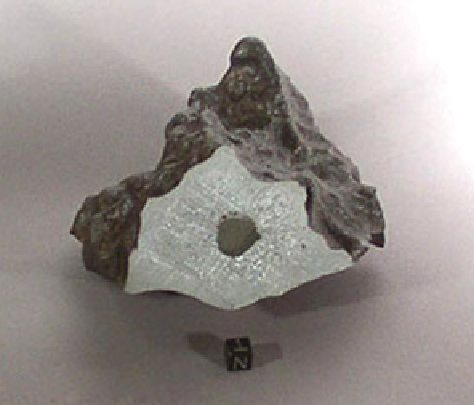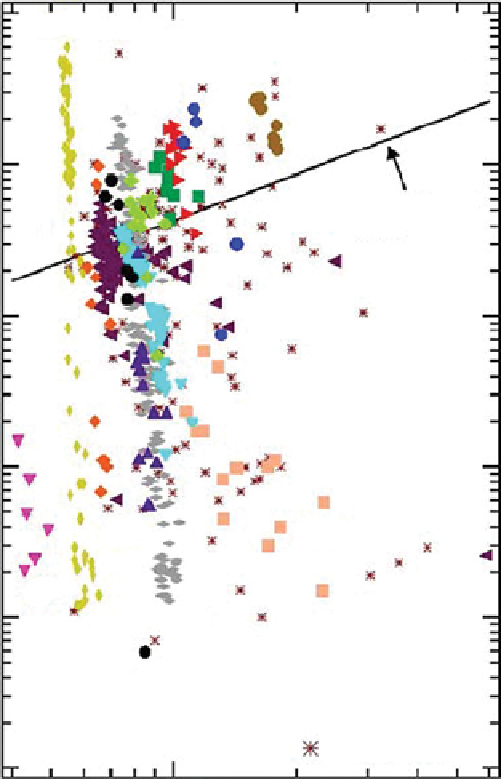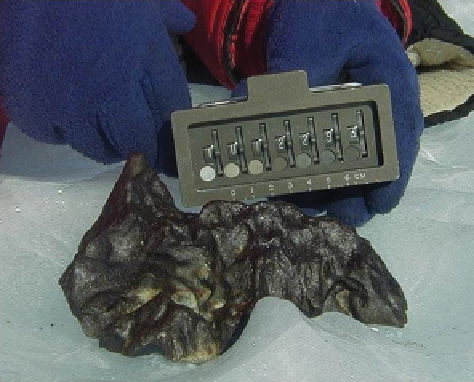Geology Reference
In-Depth Information
IIIAB iron (medium octahedrite)
4583.8 g
Found December 20, 2000
17.5 × 11.0 × 7.0 cm
Weathering = B
second largest iron meteorite group. The iiiAB iron meteorites are thought
to have formed during the crystallization of an S- and P-bearing metallic
core, at the center of a differentiated asteroid. The metal composition over-
laps with that of the main group pallasite meteorites, suggesting that they
may be from the same parent body. These deep-formed asteroid samples
thus offer a glimpse into differentiation processes in the early solar system.
100
IIAB
IID
IIF
IIC
IVB
IC
10
Cl chondrite
ratio
IAB
IIE
1
MET 00400
IVA
0.1
IIIE
IIICD
0.01
IIAB
IIF
Ungrouped
0.001
4
10
20
60
Wt% Ni
Plate 79
MiNERALogy
SigNiFiCANCE
MET 00400 exhibits a medium octahedrite structure with
original band widths of 1-1.5 mm and typically L/W of
15-20. Each mass exhibits a single orientation of the
Widmanstätten pattern, suggesting the formation of each
(and perhaps all) from a single austenite crystal. A large,
polycrystalline troilite nodule (17 cm in diameter) is pre-
sent. The interior structure is extensively heat-altered and
dominated by recrystallized kamacite. Dimensions of
recrystallized grains are typically 100-500 microns.
MET 00400 is the largest mass of a 33-member pairing
group, comprising a total of 5.3 kg. These meteorites range
in mass from 4583.8 to 3.2 grams. They occurred within
200 m on either side of a line 5.8 km long connecting the
largest and smallest mass. Although larger masses tend to
lie at one end and smaller masses at the other, the distribu-
tion is imperfect and a mixed-mass clump is found in the
center. The lineation of the distribution is not a result of
either ice exposure or search strategy, as a much larger,
rectangular area of blue ice was exposed and searched and
meteorites were recovered throughout this larger area. The
lineation may suggest a relatively recent fall.
References [818]



